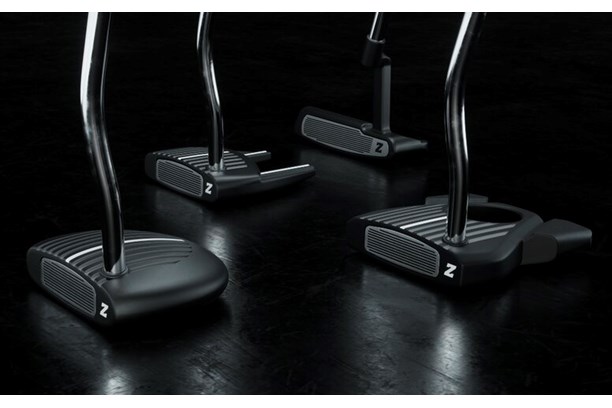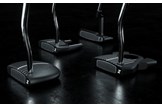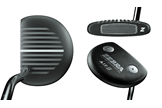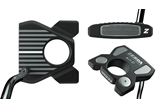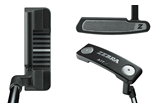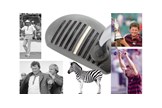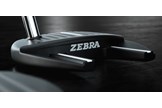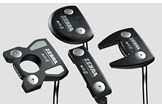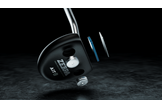Zebra Putters 2022 Review
Last updated:
-
At a glance
- TG Rating
- Owner Rating
-
Pros
– Brilliant Zebra inspired alignment aid.
– Designed by one of the best putter engineers in the business.
– Adjustable weight lets you tailor each model to your preference.
-
Cons
– Apart from the initial lack of choice for arcing stroke players it's difficult to see any.
What we say...
Zebra putters combine the brand’s original striped alignment aid tech within four modern high MOI heads.
Alignment putters are ten-a-penny in the modern game. 2-Ball, Triple Track, and True Path are great alignment aid stories used on some of the best putters, all of which promise to help golfers aim consistently better. But, back in 1976, when golf was played with persimmon drivers, and muscleback blade irons, a time when MOI putter models weren’t even close to being on the scene, Zebra set out to change the face of putting.
Quickly they achieved their goal. Two majors were won with their models, hundreds of thousands of golfers bought into the first mass-market alignment putter to ever to hit the game, and then the brand disappeared. 46 years on Zebra putters are making a comeback…
History of the Zebra putter
Zebra putters were a big deal back in the ’70s, ’80s and early ’90s. Nick Price won the 1994 Open Championship with a Zebra, as did Ray Floyd the 1976 Masters. The Zebra was invented by Dave Taylor the same year Floyd won his Green Jacket, which was a time when mallet putters were not a big thing.
Back then Ping’s toe and heel-weighted Anser putters ruled the roost, but inventor Dave Taylor reckoned bigger putter heads offered more forgiveness and thanks to having wider bodies he got the perfect canvas to showcase the impact of his Zebra striped alignment aid.
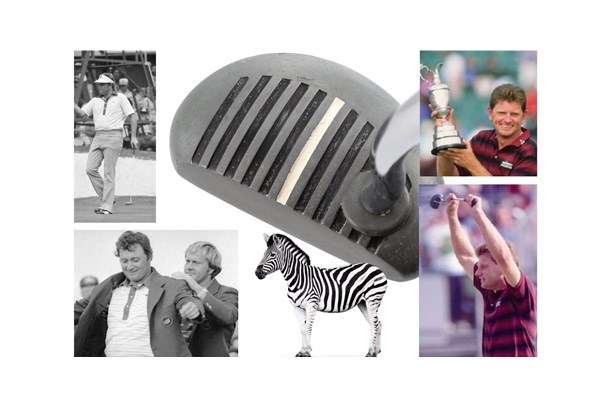
From inventing the first Zebra mallet in 1976, Taylor went on to sell the rights to produce his design to Ram in 1979. His son Dale Taylor then sold Ram the Trademark and Patent rights the following year, and whilst the Taylor’s were no longer part of the company, Ram doubled in size within three years.
Since then Zebra putters have held a special place amongst tons of golfers’ hearts around the globe. They were the first majorly successful mallet putter and the changeable headweight gave golfers the opportunity to personalise the feel of their putter in a way that just hadn’t been possible before.
Designed by a top engineer
You probably haven’t heard Austie Rollinson’s name before, but for 23 years he’s been the brains behind Odyssey Golf (he’s been an industry insider for 30 years), where he’s led innovation and design. Rollinson has played a role in 500+ putter models, his name can be found on 300+ Patent applications and his designs have turned over $2 billion in putter sales. The guy is a big deal when it comes to designing putters.
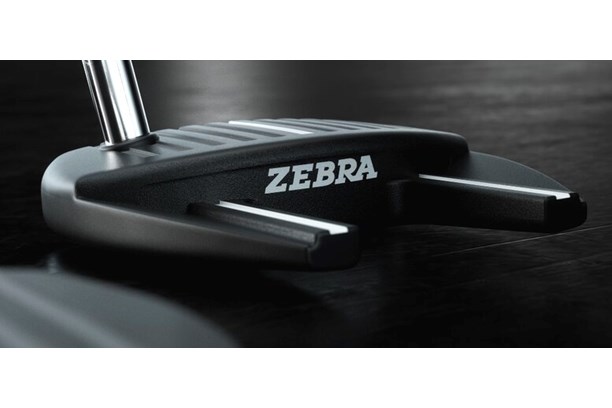
What were the Zebra putter design objectives?
Reinventing anything classic is always tricky. Get it right and you rebirth the lovely feelings people had for an original product, whilst also introducing them to better modern-day performance. Get it wrong though and ‘gimmick’ is a word waiting to tumble from consumers lips.
Whilst designing the new Zebra models Austie Rollinson dialled down on leveraging Zebra’s heritage. He’s kept the bold Zebra alignment feature, face balanced shafts and adjustable weighting tech, all of which were present on the original model.
He’s built on these trusted features with four new modernized head shapes, they are the Rounded Mallet – AIT 1, Fang Mallet – AIT 2, Inertia Mallet – AIT 3 and Wide-Body Blade – AIT 4. A new multi-material face insert ups feel, roll and mass positioning credentials, and Rollinson has also introduced modern weight and balance principles, so inertia properties have been optimized.
New heads and a new alignment system
Putting technique and theory has moved on massively since the original 1976 Zebra, it’s meant Austie Rollinson has taken the opportunity to build the most popular modern-day alignment features into the original Zebra stripe system.
The AIT 1 Classic Mallet has elongated stripes (over the original), which are great for highlighting whether the putter blade’s aligned at the target. The AIT 2 Fang Mallet has framing fang stripes, whereas the AIT 3 Inertia Mallet has a golf ball alignment circle directly in line with the centre of the face.
Each will attract the eye of various golfers, depending on how individuals set up to their target. The AIT 4 Wide Body Blade also introduces the benefits of a Zebra stripe alignment system to a modern-day blade putter.
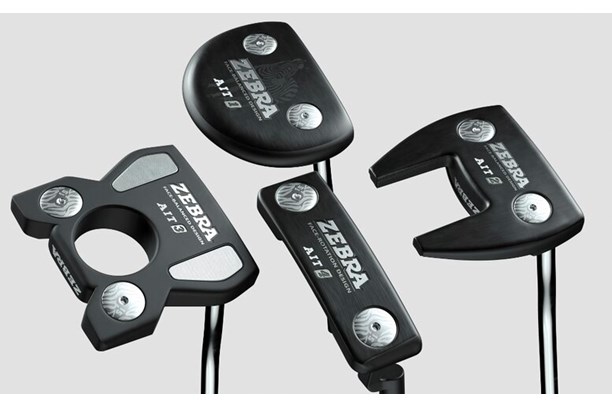
Tell me about the face insert
The new Zebra putter face insert offers golfers the soft feel of urethane with the responsiveness of steel. A CNC Milled 303 stainless steel face plate sits within a urethane backer, and Rollinson says the design creates additional friction to help impart topspin at impact. The idea maximises the ball’s contact with the ground and reduces how long putts skid. The tech offers golfers a more consistent skid, which is important in controlling overall distance consistency.
Thanks to the face insert’s multi-material construction there’s also a weight-saving versus a traditional steel face putter. Rollinson says the AIT 4 Wide Body Blade insert weighs in at 30.5g, saving 29.3g (over a non-insert model) which can be positioned elsewhere to boost MOI. The three mallet inserts all weigh 17g, which gives a 16.4g saving over a tradition steel face.
In the balance
In his 30 years of creating putters, Austie Rollinson reckons the key to great flatstick design is balance. Not just the balance in weighting, but also the balance of each model’s performance features. So, the alignment aid, forgiveness, weighting, feel and roll.
The thinking has meant the guy has poured huge amounts of attention into optimising the centre of gravity, weight positioning and MOI for each individual model.
We love how the brand are publishing MOI numbers for each of their new models. It means if you want to focus on the most forgiving (highest MOI), or most forward CG – for a blade-like feel, you can. You also get to see what you’re giving up by switching between models which is incredibly useful, and not available currently from any other manufacturer.
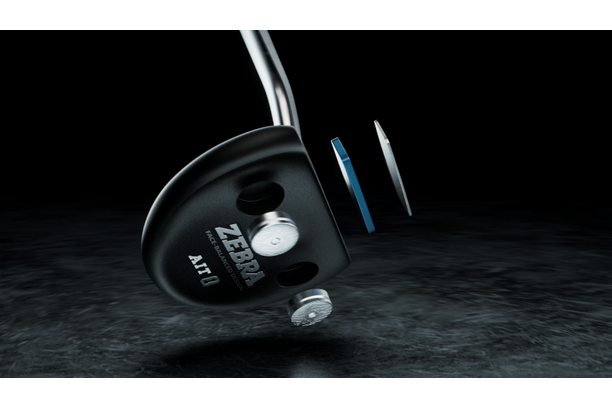
What stock shaft and grip are Zebra using?
Each Zebra putter comes with a KBS stepped putter shaft, Zebra say the model works particularly well with their slightly heavier heads to maintain stability. The stock grip is Winn’s VSN Midsize Pistol, extra sole weights (10, 15g 20g) can be bought separately.
WATCH: Best 2022 Putter video
Meet the models
Zebra AIT 1 putter
RRP: £199 | VIEW OFFER
Head mass: 355g
Toe hang: Face Balanced
Offset: 3/4 Shaft
Sole weights: 2 x 15g
Loft: 3°
MOI: (IZZ) 4172 G CM2
CG Height: 0.417” CG Depth: 1.098”
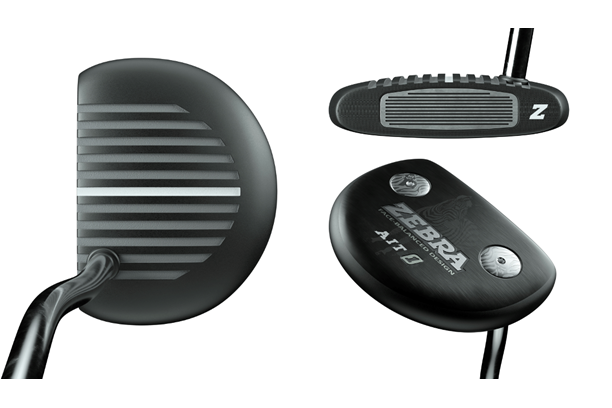
The Zebra AIT 1 is the new version of the original Zebra mallet. Fans will notice the size is bigger, this helps boost MOI and forgiveness well above the original. A horseshoe weight feature inside the sole lowers the centre of gravity and enhances MOI.
Zebra AIT 2 putter
RRP: £179
Head mass: 355g
Toe hang: Face Balanced
Offset: 3/4 Shaft
Sole weights: 2 x 15g
Loft: 3°
MOI: (IZZ) 4732 G CM2
CG Height: 0.394” CG Depth: 1.039”
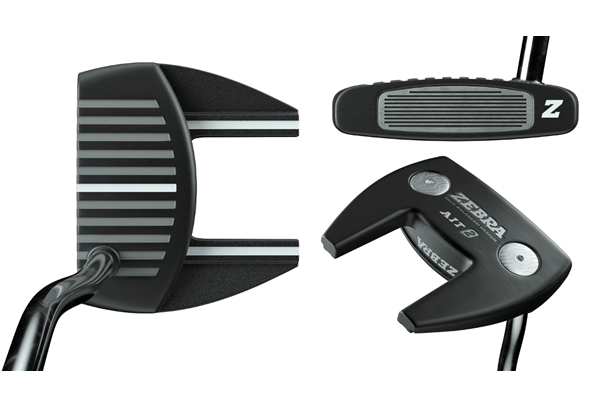
Zebra’s version of the modern classic fang-backed putter. Internally the head has been hollowed which allows weight to be pushed into the solid fangs. The idea boosts MOI higher than rival designs. Zebra say the design packs a lot of MOI into a compact footprint.
Zebra AIT 3 putter
RRP: £199
Head mass: 355g
Toe hang: Face Balanced
Offset: 3/4 Shaft
Sole weights: 2 x 15g
Loft: 3°
MOI: (IZZ) 4786 G CM2
CG Height: 0.429” CG Depth: 1.425”
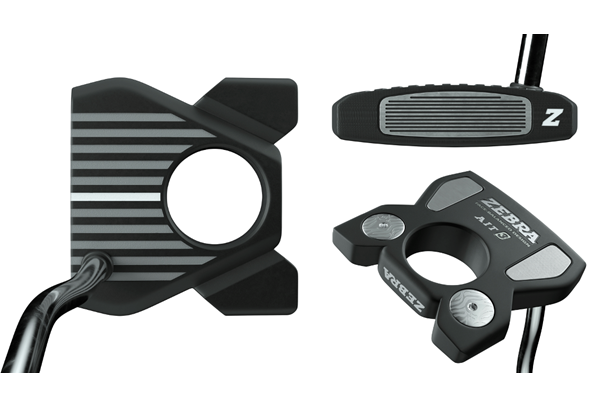
A modern forgiveness enhancing MOI mallet with the benefit of enhanced visual alignment tech, thanks to the golf ball-sized hole in its back. Weights are positioned forward and outward to give a high MOI and shallow centre of gravity to make this model super forgiving.
Zebra AIT 4 putter
RRP: £159
Head mass: 350g
Toe hang: 25°
Offset: Full Shaft
Sole weights: 2 x 15g
Loft: 3°
MOI: 4476 G CM2
CG Height: 0.594” CG Depth: 0.516”
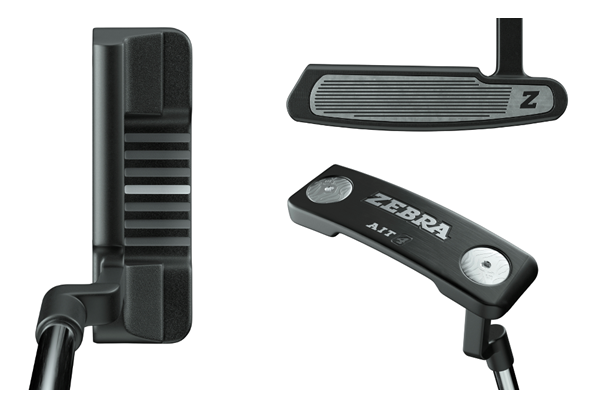
For players who like a blade look, and those whose stroke needs some putter toe hang. Zebra say this model has the forgiveness of a mallet within the shape of a blade. Weight savings from the insert enable extra toe and heel weighting to enhance forgiveness in what is a classic design.
READ NEXT:
– Best 2022 Putter test
BECOME A TODAY’S GOLFER MEMBER: Unlimited access to premium content and exclusive rewards!
Product Information
Zebra Putters
Zebra AIT 1 putter
RRP: £179
Head mass: 355g
Toe hang: Face Balanced
Offset: 3/4 Shaft
Sole weights: 2 x 15g
Loft: 3°
MOI: (IZZ) 4172 G CM2
CG Height: 0.417” CG Depth: 1.098”
Zebra AIT 2 putter
RRP: £179
Head mass: 355g
Toe hang: Face Balanced
Offset: 3/4 Shaft
Sole weights: 2 x 15g
Loft: 3°
MOI: (IZZ) 4732 G CM2
CG Height: 0.394” CG Depth: 1.039”
Zebra AIT 3 putter
RRP: £199
Head mass: 355g
Toe hang: Face Balanced
Offset: 3/4 Shaft
Sole weights: 2 x 15g
Loft: 3°
MOI: (IZZ) 4786 G CM2
CG Height: 0.429” CG Depth: 1.425”
Zebra AIT 4 putter
RRP: £159
Head mass: 350g
Toe hang: 25°
Offset: Full Shaft
Sole weights: 2 x 15g
Loft: 3°
MOI: 4476 G CM2
CG Height: 0.594” CG Depth: 0.516”
Visit the Zebra website here
